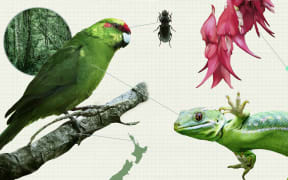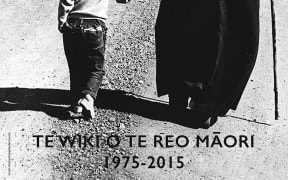
Associate environment minister James Shaw says the definitions for SNAs are clearly set out with identification based on four standard, well-established criteria. Photo: RNZ / Angus Dreaver
Bioprotection Aotearoa is concerned rules around areas of significant biodiversity are too broad and need more focus.
The rules were part of a new National Policy Statement for Indigenous Biodiversity which was being phased in from Friday.
Associate environment minister James Shaw said the changes meant there were new, tighter and clearer definitions and guidance for councils to identify and protect Significant Natural Areas.
Bioprotection Aotearoa director Professor Amanda Black believed more direction and clarity was needed.
"I have concerns about how these will be identified going from the policy. The national policy that's been put out, it prioritises everything, so it's really hard to get a focus out of that, and it will be up to councils to manage how they come about deciding on which Significant Natural Areas to protect."
Black wanted to see a lot of consultation with communities, iwi, conservationists and other stakeholders.
"Council can go and label certain areas. But without true consultation and buy-in from the stakeholders around these areas, it's just not going to be a long-term solution."
It would not just be ecological values they needed to consider, the council would also need to examine wellbeing, cultural and economic values, Black said.
There was a lack of monitoring of biodiversity and additional information was needed to build a more comprehensive picture of biodiversity in Aotearoa before deciding what was a Significant Natural Area, she said.
"We need better connectivity between policies that are produced in Wellington and the people that have to try and make sense of them, so that we are seeing those impacts in the areas like biodiversity protection."
Shaw said identifying Significant Natural Areas was not new for councils, with many already completing identification and others part way through.
"I am confident there is enough information through Environment Aotearoa 2022 and considerable supporting data to have an accurate and recent picture of the declining state of our biodiversity," he said.
"We know a third of our native species are threatened or at risk of extinction, and the more we delay the worse this situation will become."
The definitions were clearly set out with identification based on four standard, well-established criteria, which had been confirmed as appropriate by a qualified ecologist, Shaw said.
There had been extensive consultation since the draft policy statement was introduced in 2017, he said.
Local authorities are required to implement it as soon as possible with close to $20 million available over four years in the 2022 Budget to help make that happen.
Policy statements and plans for significant natural areas must be in place five years after it starts.
"Changes to policy statements and plans must be publicly notified within eight years of its implementation," Shaw said.
"If there are any disputes locally about whether a piece of land is an (Significant Natural Areas), the local authority must do a physical inspection."





